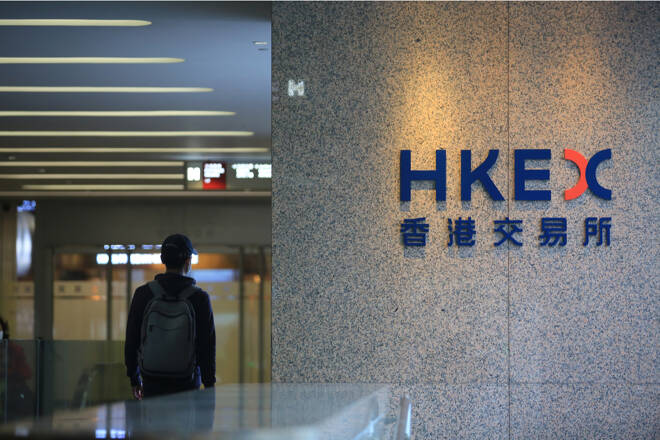Advertisement
Advertisement
Hang Seng Index, ASX200, Nikkei 225: US Stats and Earnings in Focus
By:
It is a quiet day ahead for the Hang Seng Index and the broader Asian markets. With no stats to consider, US data and corporate earnings will influence.
In this article:
Key Insights:
- It was a mixed Tuesday for the Asian equity markets, with the Hang Seng taking a tumble after reopening on Tuesday.
- Disappointing Q2 GDP numbers from China weighed on the Hang Seng Index, with the ASX 200 falling for a second consecutive session.
- However, it is a quiet day ahead for the Asian markets, leaving overnight economic indicators and corporate earnings from the US to move the dial.
It was a mixed Tuesday session for the Hang Seng Index and the broader Asian markets. After the Typhoon forced Monday close in HK, investors reacted to disappointing Q2 GDP numbers from China, with the ASX 200 extending its losses into a second session.
However, the RBA meeting minutes supported bank stocks on the ASX 200, while economic indicators from Japan contributed to a bullish Tuesday for the Nikkei despite a weaker USD/JPY.
From overnight on Monday, NY Empire State Manufacturing Index numbers for July failed to influence the Tuesday session. The NY Empire State Manufacturing Index fell from 6.60 to 1.10 in July versus a forecasted decline to -4.30.
This morning, there are no Asian economic indicators for investors to consider, leaving overnight economic indicators from the US to provide direction. US retail sales and industrial production figures will influence, as investors look for affirmation of a soft landing. The latest numbers sent mixed signals.
US Session Influences
US retail sales increased by 0.2% in June versus 0.5% in May. Economists forecast retail sales to rise by 0.5%. Industrial production numbers also disappointed, falling by 0.5% in June versus a 0.5% decline in May. Economists forecast production to stall.
While sentiment toward the US economic outlook remains the key driver as investors erase bets on a September Fed rate hike, corporate earnings and forward guidance also need consideration.
Tesla (TSLA), Netflix (NFLX), Morgan Stanley (MS), Goldman Sachs (GS), and Bank of America (BAC) are among the big names to deliver this week.
Bank of America beat earnings estimates on higher lending rates, with Morgan Stanley also beating analyst expectations despite a sharp fall in profits.
The US equity markets responded to the stats and earnings results. The NASDAQ Composite Index gained 0.76%, with the Dow and the S&P 500 rising by 1.06% and 0.71%, respectively.
ASX 200
The ASX 200 fell by 0.20% on Tuesday, with investor sentiment toward the Chinese economy continuing to weigh, while the RBA meeting minutes provided support.
The big-4 had a bullish Tuesday session. The National Australia Bank (NAB) rallied 2.03%, with ANZ Group (ANZ) gaining 1.67%. The Commonwealth Bank of Australia (CBA) and Westpac Banking Corp (WBC) ended the day up 0.69% and 0.79%, respectively.
Mining stocks had a mixed session. Rio Tinto (RIO) and BHP Group Ltd (BHP) ended the day with losses of 0.82% and 0.97%, respectively. Newcrest Mining (NCM) slipped by 0.04%, while Fortescue Metals Group (FMG) bucked the trend, gaining 0.98%.
Oil stocks had a bearish session. Woodside Energy Group (WDS) and Santos Ltd (STO) ended the day with losses of 1.09% and 0.40%, respectively.
Hang Seng Index
The Hang Seng Index reopened on Tuesday and tumbled by 2.05%.
Considering the main Index components, Tencent Holdings Ltd (HK:0700) and Alibaba Group Holding Ltd (HK:9988) slid by 4.59% and 3.50%, respectively.
However, bank stocks had a mixed session. HSBC Holdings PLC gained 0.24%, while The Industrial and Commercial Bank of China (HK:1398) and China Construction Bank (HK: 0939) ended the day with losses of 2.19% and 2.28%, respectively.
CNOOC (HK: 0883) fell by 1.14%.
Nikkei 225
(For demonstrative purposes only)
The Nikkei 225 gained 0.32% on Tuesday, despite a weaker USD/JPY.
The banks had a bullish session. Sumitomo Mitsui Financial Group (8316) and Mitsubishi UFJ Financial Group rallied by 2.09% and 2.36%, respectively.
Looking at the main components, Sony Corp (6758) ended the day up 2.56%. Tokyo Electron Limited (8035) and KDDI Corp (9433) saw gains of 0.99% and 0.17%, respectively.
However, SoftBank Group Corp. (9984) and Fast Retailing Co (9983) saw losses of 0.83% and 1.30%, respectively.
Check out our economic calendar for economic events.
About the Author
Bob Masonauthor
With over 20 years of experience in the finance industry, Bob has been managing regional teams across Europe and Asia and focusing on analytics across both corporate and financial institutions. Currently he is covering developments relating to the financial markets, including currencies, commodities, alternative asset classes, and global equities.
Latest news and analysis
Advertisement
